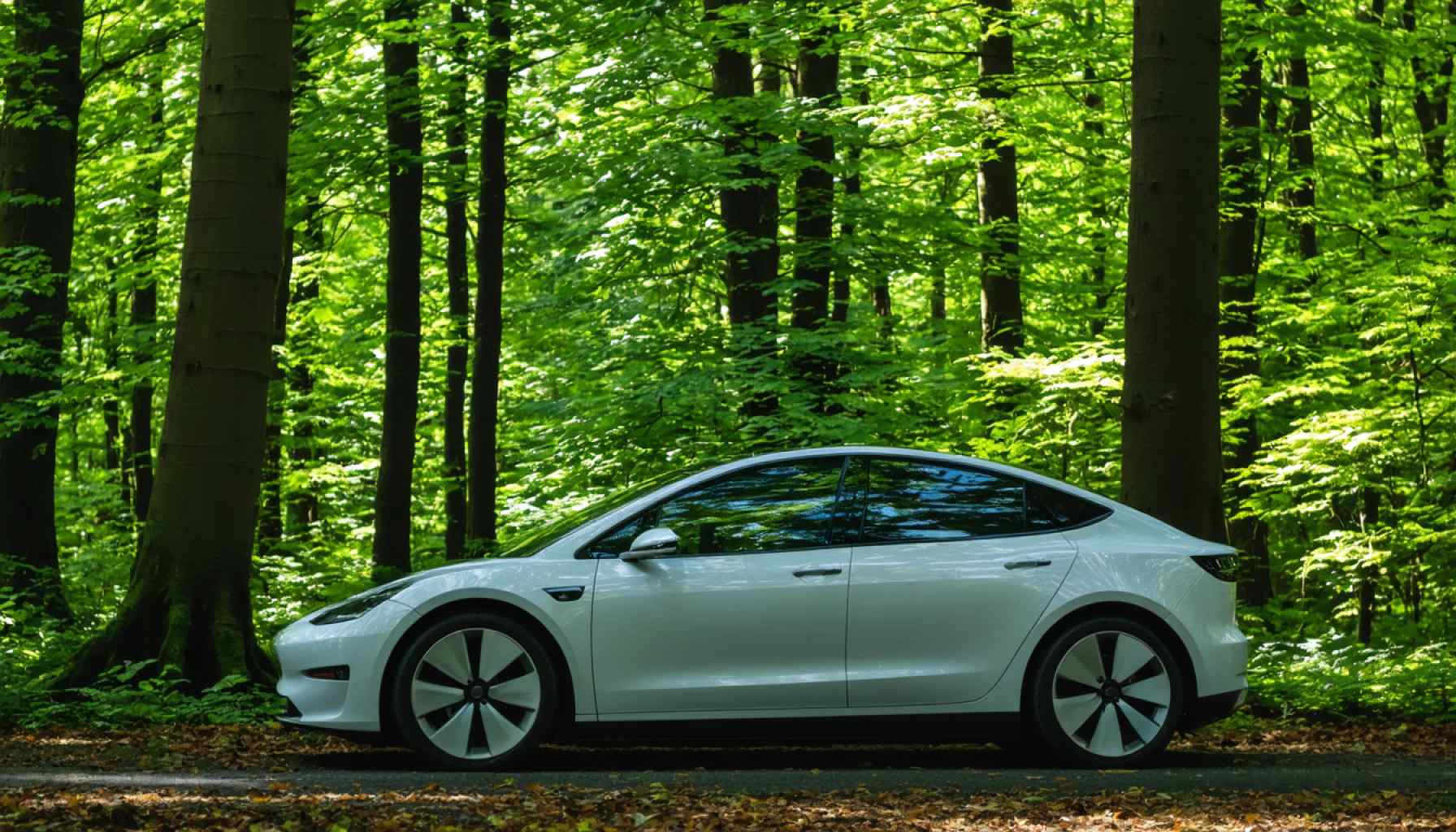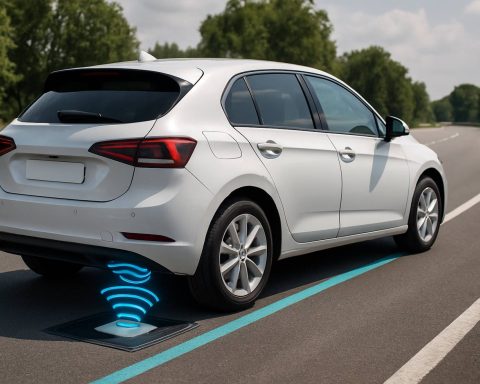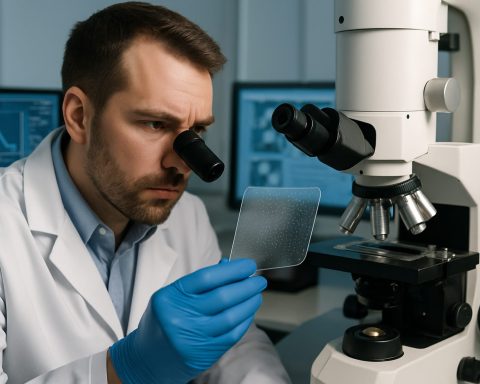- Global EV sales are soaring, with 1.2 million units sold in February 2025, intensifying the transition to electrified transportation.
- China dominates 95% of the global battery-grade graphite supply and 76% of the global EV market, creating supply chain vulnerabilities.
- Recent tighter controls on China’s graphite exports have raised global concerns about mineral dependency.
- Western markets are slow to adapt, heightening their risk from political and economic fluctuations.
- Biographite, derived from forestry by-products, offers a sustainable, eco-friendly graphite alternative, reducing EV production costs.
- Localizing and diversifying mineral sources is crucial for economic resilience, with policies such as the US’s Inflation Reduction Act in place.
- Innovation in materials like biographite could fundamentally shift global supply chains and bolster sustainability efforts.
- Embracing innovation and self-reliance may lead to a cleaner, brighter future in transportation and beyond.
The global race to electrify transportation is intensifying, transforming not just the car industry but also the intricate web of supply chains fueling this change. As we witness electric vehicle (EV) sales skyrocketing—with figures reaching an astonishing 1.2 million units in February 2025 alone—the whispers of potential supply chain disruptions grow louder. At the heart of this complex dance lies a seemingly unassuming player: graphite.
With China reigning supreme over 95% of the world’s battery-grade graphite and commanding a titanic 76% share of the global EV market, the nation’s grip on this vital component underscores a strategic foresight. Years before the Western markets began to awaken to the promise of EVs, China was already investing deeply in the supply chains that would one day fuel them. However, recent regulatory shifts, including China’s tighter controls on graphite exports in 2023, have sent ripples of concern through industries around the globe.
The Western markets, notably the US and Europe, have been slow to pivot. This sluggishness has left them vulnerable to the ups and downs of global politics and economics. Across the Atlantic, echoes of Donald Trump’s proposed 25% tariff on vehicle imports underscore the intertwined nature of trade and technology. Tariffs, though a temporary measure, hardly provide a sustainable solution to the broader issue of mineral dependency.
Into this uncertain landscape steps a beacon of hope: biographite. Born from the depths of innovation, biographite arises from abundant forestry by-products, transforming what was once waste into a treasure trove of battery potential. This novel material not only slashes the carbon footprint associated with traditional graphite production but also offers a sustainable, cost-effective alternative that could be sourced locally.
The implications of adopting such cutting-edge materials are profound. Automakers like Ford and Volkswagen, grappling with the economic pressures of scaling up EV production, stand to benefit greatly. A domestic, sustainable source of graphite could trim costs, boost resilience against volatile supply chains, and mitigate environmental impact—a win on all fronts.
Beyond the gleaming showrooms of car dealerships, the drive to localize and diversify mineral sources pertains to broader economic health. As countries rally to break free from over-reliance on any single source, policies encouraging domestic production are taking center stage. In the US, measures like the Inflation Reduction Act aim to incentivize local sourcing, while Europe is aggressively funding strategic mining projects.
But the long term triumph of the electric revolution will depend not just on policy but on bold innovation. As technologies like biographite mature, they hold the potential to shift the balance of power in global supply chains fundamentally. This isn’t merely about making better cars; it’s about reshaping entire economies and making strides toward sustainability.
As the world races toward an electrified future, the message is clear: the true power lies in embracing innovation and cultivating resilience from within. The next evolution of EVs may begin not in the mines and oil fields, but in the lush expanses of our forests. As we pivot to new materials and look to the horizon, the opportunity for a cleaner, more self-reliant future has never looked brighter.
Revolutionizing EV Supply Chains: How New Materials Could Transform the Industry
The Growing Demand for Electric Vehicles
The electrification of transportation is accelerating at an unprecedented rate, with global EV sales reaching staggering heights, such as the 1.2 million units sold in February 2025. This rapid adoption prompts a pressing need to reassess the supply chains integral to supporting this growth. At the core of this transformation lies graphite, a critical component in battery production.
China’s Dominance and Strategic Moves
China currently monopolizes the battery-grade graphite market, controlling 95% of the supply, as well as 76% of the global EV market. China’s early investment in EV supply chains demonstrates a strategic edge that the Western markets are only beginning to address. Recent regulatory restrictions on graphite exports by China in 2023 have heightened global concerns, emphasizing the importance of diversifying supply chains.
Biographite: A Sustainable Game Changer
One innovative solution emerging in this landscape is biographite, derived from forestry by-products. This material presents a significant opportunity to reduce the carbon footprint associated with traditional graphite production. By utilizing waste resources, biographite provides an environmentally sustainable and economically viable alternative, which can be sourced domestically in Western countries.
Advantages of Biographite:
– Environmental Benefits: Decreased reliance on mining, reducing ecological degradation.
– Economic Considerations: Potentially lower production costs and reduced supply chain volatility.
– Strategic Independence: Less dependence on foreign suppliers, enhancing national security.
Automaker Implications and Market Trends
Automakers, including giants like Ford and Volkswagen, could greatly benefit from the integration of biographite. Lower material costs and increased supply chain resilience are critical for meeting production targets and economic pressures. As demand for EVs continues to grow, a pivot towards sustainable materials like biographite seems more appealing.
Policy and Strategic Shifts
Governments are beginning to recognize the importance of localizing supply chains and reducing mineral dependency. In the U.S., policies like the Inflation Reduction Act incentivize domestic production. Europe is also investing heavily in strategic mining projects to ensure sustained progress in the EV sector.
Forecasts and Industry Trends
The adoption of biographite and other innovative materials could fundamentally alter global supply chains. As these technologies mature, they promise to redistribute the balance of power and drive a more sustainable and resilient economy. The ongoing evolution of the EV industry will be shaped by these shifts, with sustainability and innovation at the forefront.
Key Trends to Watch:
– Innovative Production Techniques: Continued development of sustainable materials like biographite.
– Increased Domestic Production: More countries investing in local resource supply.
– Technological Advancements: New battery technologies that may complement or supersede current graphite needs.
Actionable Recommendations
– For Automakers: Invest in R&D for alternative materials and foster partnerships with sustainable resource suppliers.
– For Policymakers: Develop initiatives that support local production of essential EV components, reducing dependency on external sources.
– For Investors: Focus on companies embracing sustainable and innovative materials, as these are likely to thrive in an evolving market landscape.
Conclusion
The shift towards electric vehicles is a transformative journey, not just in transportation but also in the broader economic and ecological framework. As the industry evolves, embracing new materials such as biographite offers a pathway to sustainability, reduced costs, and strategic independence. A future where our forests play a pivotal role in powering the next generation of vehicles is not just possible—it is emerging as a critical strategy for a cleaner, more resilient future.
For more insights on electric vehicle innovations, consider visiting the Tesla and Ford websites.












